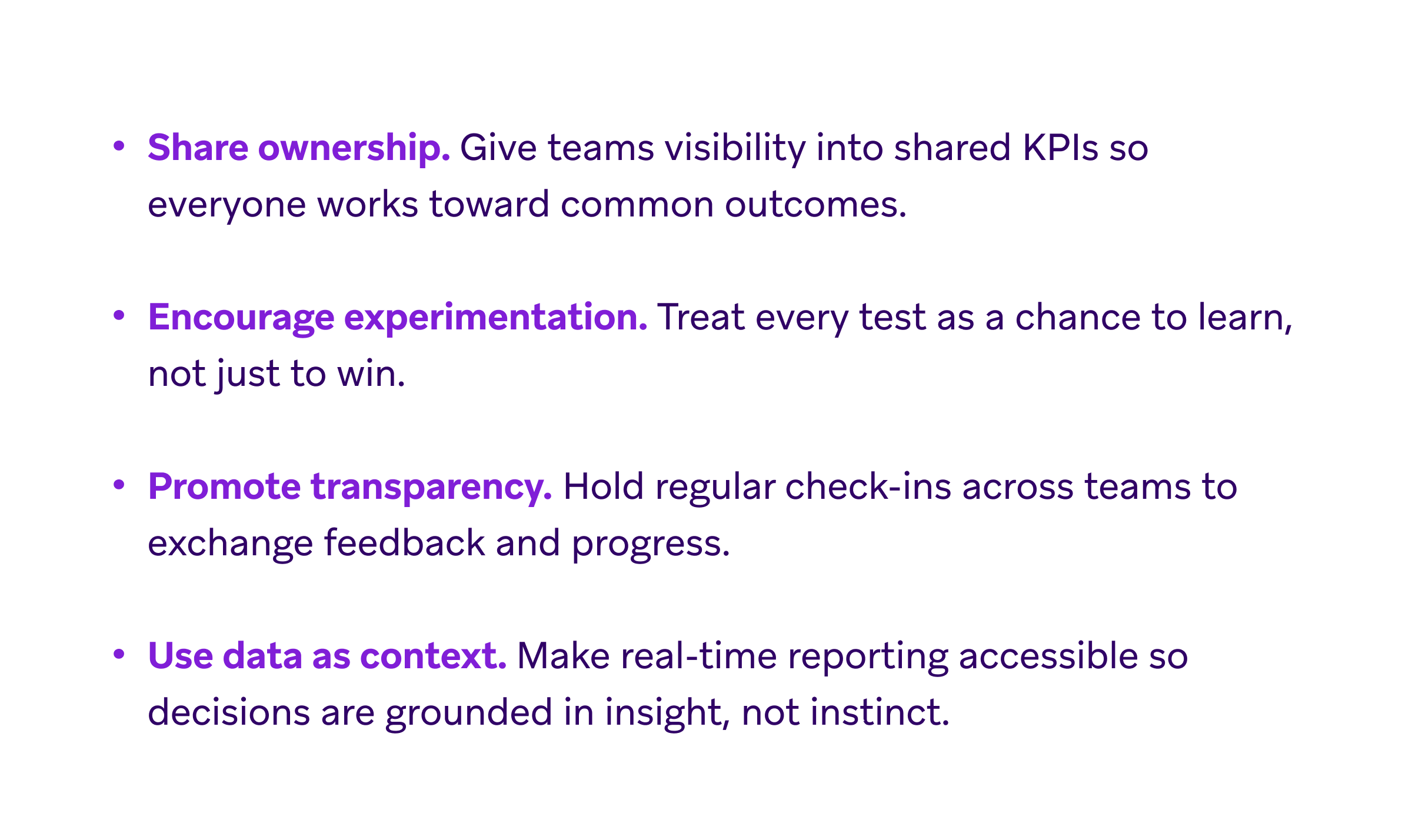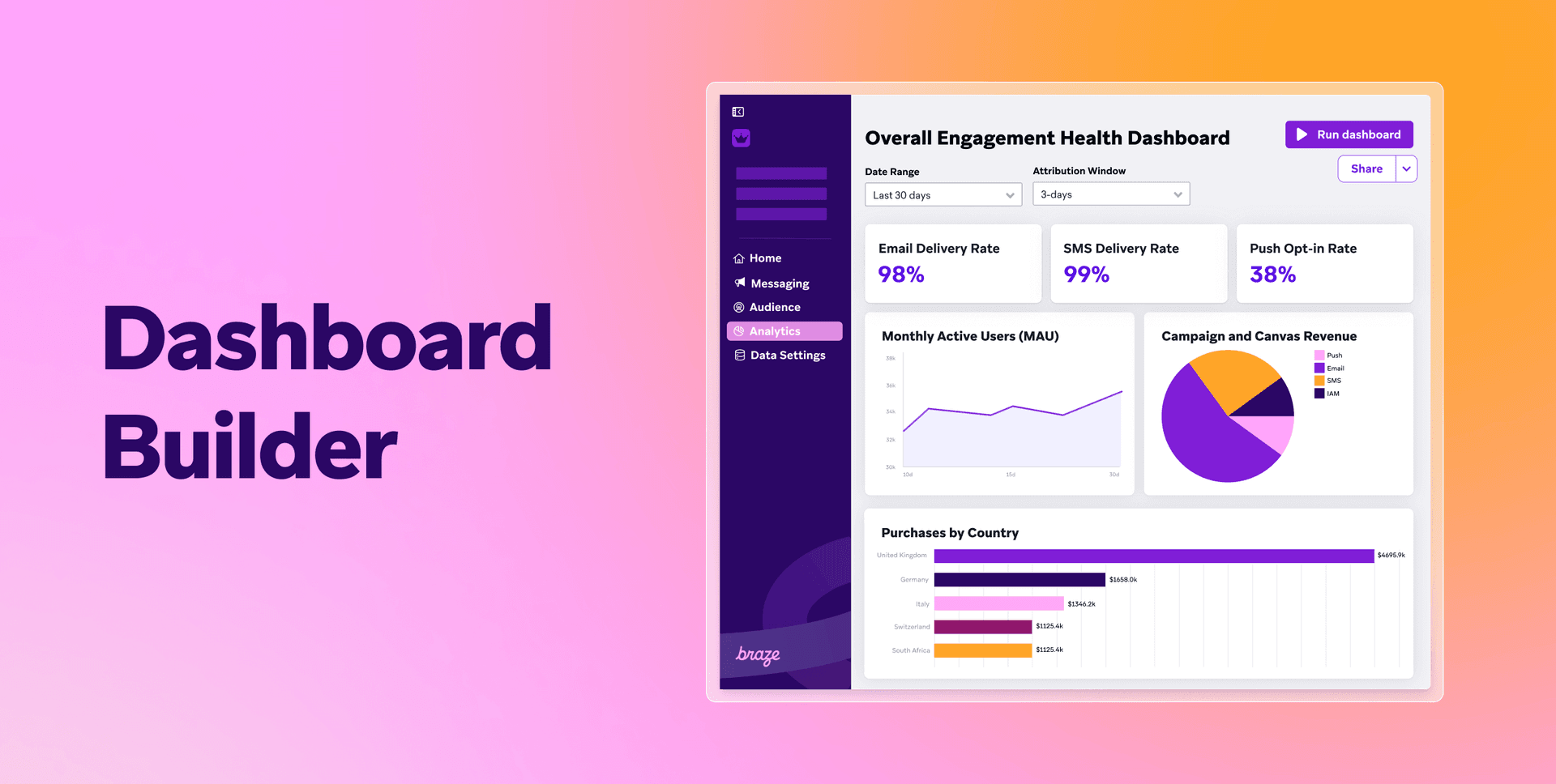Adapting to change: How startups can stay agile in a rapidly evolving market
Published on November 28, 2025/Last edited on November 28, 2025/5 min read


Team Braze
Change has always been part of doing business. What’s different today is the pace. Technology evolves overnight, customer expectations shift without warning, and new competitors emerge from anywhere in the world.
For startups, this constant movement can feel overwhelming. But it also creates space to innovate. Unlike larger enterprises that can be weighed down by complexity, startups are built to move. Leaner structures, closer customer relationships, and fewer decision layers mean they can pivot faster, experiment freely, and respond in real time. Agility isn’t just a survival skill for startups—it’s their greatest competitive advantage.
Spotting change before it hits
The first step toward agility is awareness. Businesses that recognize early signs of change can adjust before shifts affect their bottom line. Here’s where to start:
- Look for small signals
Minor changes in data often point to larger trends. A dip in engagement, a rise in support requests, or a new pattern in purchasing behavior may reveal shifting needs long before they appear in quarterly reports.
- Adopt emerging tools
Technology that once required enterprise budgets—like AI, predictive analytics, and automation—is now accessible to startups. These tools streamline workflows and help teams detect and act on change faster.
- Keep a holistic view of customers.
A connected understanding of behavior across channels provides early insight into what’s changing and why. Braze makes this possible by unifying customer data from web, mobile, email, and in-app touchpoints into a single, real-time platform. With that visibility, startups can spot trends as they happen and adjust strategies immediately.
Being first to see the signal means being first to adapt—and often first to grow.
Building an agile business model
Agility is more than speed. It is the ability to adapt thoughtfully and make confident decisions as conditions evolve. For startups, this starts with two key layers of agility: structural and strategic.
Structural agility focuses on how your organization operates. Short approval chains, small cross-functional teams, and shared access to live data keep information moving and decisions quick. Centralized platforms such as Braze give every team the same real-time view of customer behavior, which reduces bottlenecks and helps teams stay aligned.
Strategic agility is about how you plan and prioritize. Agile businesses work in shorter cycles, often quarterly or sprint-based. They test new ideas, review results, and adjust based on what customers actually do. This rhythm keeps goals relevant and momentum steady even as market conditions shift.
Businesses that master both layers tend to share a few core traits:

When structure supports speed and strategy drives focus, agility becomes part of how the business operates rather than a reaction to change.
Fostering an agile culture
Agility thrives when people feel empowered to act, not just when processes allow it. True adaptability comes from how teams think, communicate, and solve problems together.
Cross-functional collaboration is at the heart of this mindset. When marketing, product, and analytics teams share ideas and insights, decisions become faster and more informed. Open communication keeps everyone focused on the same goals, reducing duplication and improving customer experience.
To build and sustain this kind of culture, startups can focus on a few guiding principles:

Modern tools can reinforce these behaviors. Automation frees teams from repetitive work, leaving more room for creativity and strategy. Accessible dashboards make it easy to see performance as it happens, creating alignment across functions.

When people have both autonomy and clear information, agility becomes part of the culture. Teams stay curious, connected, and ready to move with their customers rather than behind them.
Agility in action: Grover’s approach to growth
European technology-rental company Grover shows how an agile mindset turns insight into action.
With a lean, collaborative team, Grover used Braze to modernize its customer engagement strategy and make data central to every decision. By connecting Braze with Amplitude, the company discovered that customers who added a product to their cart within 30 minutes of signing up were far more likely to complete a rental. That insight shaped new onboarding campaigns that encouraged early product interaction.
The team also embedded agility into its daily operations:
- Multivariate testing identified which messages performed best across audiences.
- Automated workflows cut dependencies between marketing, BI, and product teams, accelerating campaign deployment.
- Shared reporting kept every team aligned on performance and next steps.
These habits created a culture of experimentation and adaptability that allowed Grover to optimize faster, deliver stronger experiences, and grow efficiently—even as customer expectations evolved.
Final thoughts
Agility turns uncertainty into opportunity. When startups stay curious, act quickly, and base decisions on live insight, they can evolve alongside their customers instead of falling behind them.
By combining real-time data with a culture of collaboration, small teams can strengthen relationships, improve performance, and find new paths for growth.
Braze provides the visibility and tools to make that possible. With connected data and actionable insights, startups can move in step with their customers, respond faster, engage smarter, and adapt continuously in a world that never stands still.
Be Absolutely Engaging.™
Sign up for regular updates from Braze.
Related Content
View the Blog
Adapting to change: How startups can stay agile in a rapidly evolving market

Team Braze

Digital body language: The startup growth multiplier

Team Braze

Understanding email open rates and how to improve them
